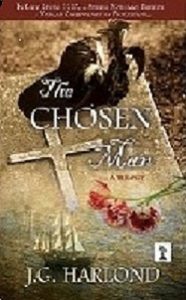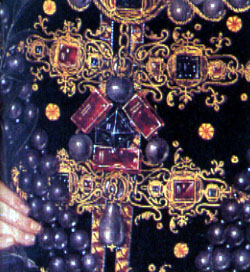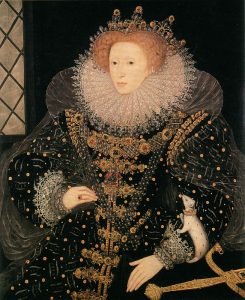Riddle: How does an author use historical fact to create and describe secondary or minor characters in historical fictional?
Secondary characters are often used to develop the main character(s) and/or move the plot. Whether or not the protagonist was a real person these characters are frequently fictional constructs, and, like minor characters, in the story to serve a purpose. They do, however, have to be believable; meaning they should develop or change during the course of the novel, and have identifiable strengths, foibles or flaws readers can relate to.

An example of this is the character Marcos Alonso Almendro in The Chosen Man (Penmore Press, 2015).
Here’s a scene from the novel where the main character, wicked, wily Genovese merchant Ludo da Portovenere is making his first moves to manipulate the tulip market in Holland during the 1630s. He and Marcos, who is acting as his servant, are in a tavern. This is where Marcos is introduced to his first taste of coffee.
Amsterdam, early June 1635
‘Leaving a glorious day of bright summer sunshine, Marcos followed Ludo through a door and stepped into a netherworld of peat-filled grates and dark afternoons. It wasn’t the typical atmosphere of Dutch taverns he had already come to know – that particular hush broken by hearty guffaws and back-slapping camaraderie – this place was a composite of scents and sounds he could not name. There was one odour in particular, a pleasant aroma but not the usual malty smell of warm beer, nor the clear liquid that they served in thumb-sized tumblers that smelled like a woman’s perfume. He stopped and inhaled.
“Coffee,” said Ludo. “Like it?”
“It’s wonderful.”
“Doesn’t taste as good as it smells, but you can add it to your list of new accomplishments.”
Marcos gulped, the bastard knew about his journal. He knew everything – all the time! But the Italian wasn’t interested in him, his eyes were scanning the darkness: an eagle-owl detecting its prey in the half-light.
Groups of men smoking curled-stem pipes were gathered around circular tables. Above, on a balcony, six or seven burghers huddled in negotiation. One smaller table was occupied by a single client. Ludo put a hand on Marcos’ shoulder and steered him towards a corner. A stub of candle stuck in a wine bottle flickered as they disturbed the heavy air.
“Why’s it so dark?” Marcos asked.
“So people can’t see each other I expect.”
Ludo removed his wide brimmed hat and placed it conspicuously on top of his miniature sea chest in the centre of their table (. . .) settled himself into a chair and leaning back in his customary manner, gazed around him. “Dark is what they are used to,” he said. “Light is a special commodity in the Low Countries and your average Dutchman is too tight-fisted to waste money on candles. Candles offer no material return by definition.”
“You don’t like the Dutch, do you?”
“On the contrary, I enjoy them greatly: trying to out-manoeuvre them is one of my favourite pastimes. Successful strategy is the finer point of profit, Marcos. If you don’t like …” He was interrupted by the serving girl.
Marcos watched the way the plump wench looked at Ludo. What did women see in him? He wasn’t good-looking. Could they smell his money?
“I’ve ordered coffee for you to try, but not at this table. You’re my servant remember, you should be over there.” Ludo nodded in the direction of the kitchen area. “But stay close and keep an eye out for onlookers. I’m expecting company and I want to know who sees us talking. If you notice anyone taking a special interest, follow him. Find out who he is, and where he lives if you can. I’ll see you back at the lodging tonight if we are separated.”
“Yes sir.” Marcos got up and doffed his soft cloth hat. It wasn’t a fatuous move, Ludo’s tone was too serious for that.
“Chat up the waitress,” added his master, “see if that man up there by himself is a regular or if he just came in today.”
“How shall I do that? I don’t speak Dutch – or French – and she won’t have any Latin.”
“You’ll manage. Languages are only an obstacle to people with no imagination. Do you have an imagination, Marcos?” . . .
Marcos leaned against the high trestle table that acted as a bar at the back of the tavern. The waitress placed a small white china cup beside him and smiled. He winked and lifted the cup. Keeping his eyes on the girl’s blue gaze he gulped the hot brown liquid. The wench smiled as his eyes opened in shock and surprise. He would have spat out the foul tasting stuff immediately but she was in his direct line of fire: she’d put herself there on purpose. He moved the scalding, bitter liquid around his mouth and forced himself to swallow. The cheeky wench laughed, said something incomprehensible and raised a hand holding a bowl of brown granules. With her free hand she spooned some into his cup and stirred. Marcos stared at the brown poison. He was going to have to drink it. The girl mimicked his wink and waited until he had the cup to his lips again before skipping off to serve new customers.
Marcos took just a very small sip. It tasted better. In fact it was quite nice. Crossing one leg in front of the other and leaning sideways with an elbow on the high bench behind him, in what he considered the appropriate stance for a coffee habitué, he took in his murky surroundings. The door to the street opened and in that instant of light something on the balcony caught his eye, he glanced up. Something had glinted. That something was a pair of round spectacles on the round face of a gnome-like creature from a children’s fairy tale; a shoemaker, a tailor. Whoever and whatever he was, he was bending down observing Ludo through the balcony railings with far too much interest. Marcos looked for the girl; now he needed to find out about two men. But exactly how he was going to learn anything at all was quite beyond his imagination.’
***
Without knowing it at the time, this scene follows author Helen Hollick’s tips for writing historical fiction. I tried to put myself into the setting to create the atmosphere and imagined what it must have been like in a Dutch tavern in 1635. I needed the secondary character, Marcos, to start acting on his own, and I needed to show the protagonist, Ludo, was not to be trusted. Fact in historical fiction is vital: accuracy in setting and detail is essential. But when it comes to the plot and fictional characters take Hollick’s advice, “Don’t get so bogged down in research that you never get on with writing your story”.
Avoiding ‘gadzooks vocabulary’ is both easy and difficult: employing diction that is appropriate to the time and setting, while also being in the modern lexicon sometimes means looking up words to find out when they were first used, and making some surprising and disappointing discoveries. In this scene I use the word ‘waitress’. It sounds like a relatively modern term for the setting, but I wasn’t happy about using ‘serving girl’ all the time, it was awkward; and the idea of ‘serving wench’ carries vulgar implications that distracted from what was happening. The term ‘waitress’ slipped in and felt appropriate because it reduces the girl to her function, making her less relevant to the incident and maintaining the focus on what Marcos is doing, and is about to do.
When I did finally check ‘waitress’, I was delighted to find the term waiter goes back to the 14th century and was used for males waiting at tables in taverns in the 17th. Unfortunately, the term waitress wasn’t in common use until the early 19th century – but it might have been . . .
(This was originally written for the Hoydens and Firebrands blog.)
Historical Novel Society Review of The Chosen Man – November, 2015
Be prepared to be immersed in this book. The research into the tulip trade in 1636 (the story is based on a true event) and the manor house life of 17th-century England add depth to the storyline. A well-written period novel that I highly recommend. Jeff Westerhoff for the HNS.
See the review.
Click on this link for Amazon preview
J.G. Harlond
See: www.jgharlond.com



 On Edward’s death, the magnificent Three Brethren passed into the hands of his elder sister Mary, then became a favourite jewel of Elizabeth I. It features in several of her portraits including the famous ‘ermine portrait’. Subsequent portraits of James 1st of England, VI of Scotland show him wearing the Three Brethren as well.
On Edward’s death, the magnificent Three Brethren passed into the hands of his elder sister Mary, then became a favourite jewel of Elizabeth I. It features in several of her portraits including the famous ‘ermine portrait’. Subsequent portraits of James 1st of England, VI of Scotland show him wearing the Three Brethren as well.

